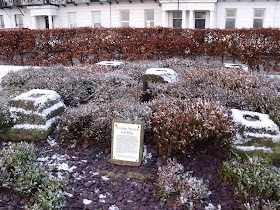Oh well, the Byzantine medallion in my post of 9th December last year went unsold. You can still grab yourself a bargain as it is on offer for sale at $1,900,000!
Personally I’m not surprised that this lot did not find a buyer. Money aside it is a rather specialised item that there can’t be many potential purchasers for.
Pages
▼
Wednesday, 20 January 2010
A not so mundane denarius of Marcus Aurelius

Sometimes the most mundane of issues turns out to be far from it. Take the above coin for example, purchased from an unremarkable stock of Roman coins at a price that was, I suppose, in the buyer’s favour.
A silver denarius of Marcus Aurelius (or the Richard Harris character in the film Gladiator), it looks like it should be simple to catalogue but I could not locate this in RIC volume 3;
M ANTONINVS AVG
Laureate bust right
TRP XXXII IMP VIIII COS III PP
Salus seated left holding branch, serpent at feet to left.
Having posted an image on the FORVM message board it was Curtis Clay who came up with the explanation that this is a mule, a mixing of an incorrect pairing of dies or punches that were used to make the coin;
“The type seems to be Salus seated l., holding branch above snake coiled on ground and raising head before the goddess' knees.
Exactly that type is known:
(a) With obverse legend M ANTONINVS AVG as on your coin, but reverse legend COS III P P, RIC 425, 15 specimens in Reka Devnia hoard.
(b) With obverse legend M AVREL ANTONINVS AVG, reverse exactly as your coin, TR P XXXII IMP VIIII COS III PP, RIC 385, 58 specimens in the Reka Devnia hoard.
It is perfectly plausible that an old obverse die with legend M ANTONINVS AVG, meant to go with reverses labelled COS III P P, lasted into the next issue, when the reverses had returned to a fully dated legend.
However, judging from the sequence of the types, which I tried to work out in a diagram some twenty years ago, Marcus' TR P XXXII had already begun when the shortened obverse legend M ANTONINVS AVG was introduced, and it was in the course of that issue with the shortened obverse legend, Marcus still being TR P XXXII, that the Salus seated type was introduced.”
A silver denarius of Marcus Aurelius (or the Richard Harris character in the film Gladiator), it looks like it should be simple to catalogue but I could not locate this in RIC volume 3;
M ANTONINVS AVG
Laureate bust right
TRP XXXII IMP VIIII COS III PP
Salus seated left holding branch, serpent at feet to left.
Having posted an image on the FORVM message board it was Curtis Clay who came up with the explanation that this is a mule, a mixing of an incorrect pairing of dies or punches that were used to make the coin;
“The type seems to be Salus seated l., holding branch above snake coiled on ground and raising head before the goddess' knees.
Exactly that type is known:
(a) With obverse legend M ANTONINVS AVG as on your coin, but reverse legend COS III P P, RIC 425, 15 specimens in Reka Devnia hoard.
(b) With obverse legend M AVREL ANTONINVS AVG, reverse exactly as your coin, TR P XXXII IMP VIIII COS III PP, RIC 385, 58 specimens in the Reka Devnia hoard.
It is perfectly plausible that an old obverse die with legend M ANTONINVS AVG, meant to go with reverses labelled COS III P P, lasted into the next issue, when the reverses had returned to a fully dated legend.
However, judging from the sequence of the types, which I tried to work out in a diagram some twenty years ago, Marcus' TR P XXXII had already begun when the shortened obverse legend M ANTONINVS AVG was introduced, and it was in the course of that issue with the shortened obverse legend, Marcus still being TR P XXXII, that the Salus seated type was introduced.”
The two components (undated Salus with the short obverse legend / dated Salus with the long obverse legend) that make up this coin are not uncommon if the statistics of the contents of the Reka Devnia hoard are an accurate reflection of the rarity of the types. However, this would appear, on admittedly only a scant literature search, to be the first recorded example of this combination (short obverse / dated Salus reverse) of types.
Monday, 11 January 2010
Filey Roman signal station

Whilst in Filey on the Yorkshire coast over a snowy New Years Eve 2009 I grabbed a couple of pictures of the stones excavated from the Roman signal station at Filey.

The station, built during the late fourth century AD, is an unusual, late structure from Roman Britain and was positioned on "the Brigg", a promentary being eroded by the sea and following the (last, during the 1990's?) excavation of the site five foundation stones were relocated to some ornamental gardens in the town.

As noted on the interpretation board the central stone has a carving of a dog chasing a stag running left.

This can be hard to see, even when it's right in front of you, so I've just painted around the outline in the following photograph.

There were other similar stations forming a chain on the Yorkshire coast and I've also visited the remains of the ones at Scarborough and Goldsborough. The one at Ravenscar unfortunately disappeared under the construction of Raven Hall and the one at Huntcliff sadly fell into the sea after being re-excavated during the 1960's.
Below is an artist's impression of what they might have looked like, although the (post?) holes in the foundation stones suggest that there might have been a significant amount of timber in their construction.
